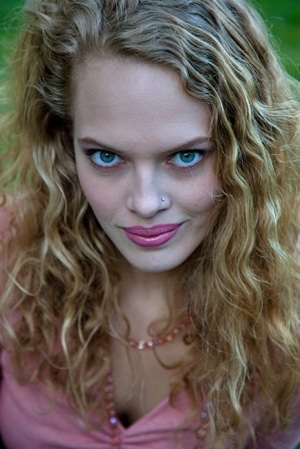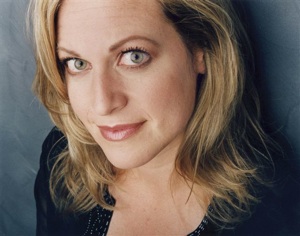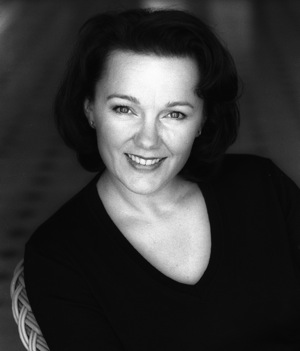 The West Edge Opera audaciously squeezed a huge Strauss opera onto a modest stage this November, another win for the small but popular opera company. As accessible to modern audiences as it was authentic in approach, Ariadne auf Naxos continued a year of “Popera” under the new artistic direction of Mark Streshinsky. Rather than a sea of grey, as one might see in more staid venues, the El Cerrito theater’s younger crowd was by turns confused and delighted by the production.
The West Edge Opera audaciously squeezed a huge Strauss opera onto a modest stage this November, another win for the small but popular opera company. As accessible to modern audiences as it was authentic in approach, Ariadne auf Naxos continued a year of “Popera” under the new artistic direction of Mark Streshinsky. Rather than a sea of grey, as one might see in more staid venues, the El Cerrito theater’s younger crowd was by turns confused and delighted by the production.
After leaving its long-held spot at the Julia Morgan Theater, the Berkeley Opera has reinvented itself as West Edge Opera, and now appears in El Cerrito High School’s new state-of-the-art Performance Center.
Strauss turned convention on its ear with his 1916 crossover opera, combining serio with buffo, as he squashed an Italian commedia troupe on top of a straitlaced Greek myth. And in true artistic fashion, each component informed the other with gratifying results. In West Edge’s version, the troupe of physical comedians gained the aura of a racy cabaret act.
Written for an opera pit orchestra of 37, West Edge used a reduction by Christopher Fecteau for 18 instruments, with a single keyboard player hastening to combine the parts of piano, celesta, and harp. But under Conductor Jonathan Khuner’s baton, the sound was full and dramatic.
In the first act, the orchestra remained onstage, with the house lights up, and actors rushing back and forth grabbing costumes and props. Streshinsky came onstage to ask us to be patient while the orchestra “rehearsed,” and to feel free to quietly talk and text while the “Composer” was trying to combine two programs. It was droll and effective, and, while Strauss’ Overture filled the hall, many in the audience wondered when it would begin. Like Noises Off, the back-stage farce was the backbone of the opera.
The curtain rose on the second act, a play within a play, with the lonely Ariadne sobbing between Mai Tai’s in a lounge chair on her desolate Greek isle where Theseus abandoned her. Well, desolate until the cabaret troupe arrived to cheer her up! Their conniving chanteuse, having already snared the heart of the Composer, next tried to cheer our diva, who is outraged at sharing a stage with her. But Zerbinetta wins her grudging admiration with an aria on the cruelty of love, which the young Emma McNairy sang brilliantly while mugging for the camera. The production manager followed her with hand-held video, projecting extreme close-ups that filled the screen behind her. It was an inspired You-tube generation moment for a self-referential opera.
As Strauss entertained the question of popular idioms in opera, he was also exploring female roles through very different personas. Indeed, though the “serious” half of the opera concerns abandonment and love, the male characters are peripheral to the emotional truth of the work, and the interactions of the women reveal the real story. Those principals are the overwrought Composer, convincingly manic-depressive and richly sung by Buffy Baggott, the haughty Prima Donna (playing Ariadne), sung with emotional and vocal heft by Marie Plette, and the coquettish Zerbinetta, a tour de force performance by Emma McNairy.
Before Strauss’ era female roles were limited. Woman was deified and decried as love and lust warred in poets’ hearts (or loins), with idealized Romanticism, fin de siècle decadence and earthly desire all battling to define Woman—a definition straddling Art and Property. Strauss returned his heroines to a fuller humanity, though his roles described a slyer vision, one no doubt influenced by the changing mores of his day. Egon Schiele’s nudes, erotic and grotesque, were currently showing in Strauss’ Vienna, while the drums of World War I were on the march.
Ariadne’s leads had real complexity, with three vocal types and three ages of woman—a young coloratura flirt with surprising depths, a full-voiced mezzo who composes songs of truth and eternity, and a Wagnerian diva, mature-voiced and mourning… when on-stage. Though stage characters are of necessity exaggerated, Strauss found a balance of contradictions that gave them modern depth.
Strauss followed Wagner’s footsteps in composing slowly shifting blocks of sound, giving rise to his “tone poems.” But unlike Wagner, Strauss’ arias are considered the epitome of soprano vocal writing, elegantly melodic, deeply realized, and as appreciative of the everyday as Wagner was of the heroic.
A strong cast gave excellent support to those leading ladies, with baritone bass Philip Skinner as the Music Master and Daniel Cilli as Harlequin. Ben Bongers delivered Bacchus’ arias in a fine-grained tenor.
No slouches at finding the heroic in the everyday, West Edge’s next production is an English revision, mixing Mozart with manga in The Magic Flute, starring Eugene Brancoveanu as Papageno. Japanese adult comics and opera? More information on their “Popera” season is available at www.berkeleyopera.org.
—Adam Broner
Photo top of Emma McNairy as Zerbinetta, photo by Till Krueger; middle, Buffy Baggott as the Composer, photo by Paul Sherman; and bottom, Marie Plette as Ariadne, courtesy of Barrett Vantage Artists.
